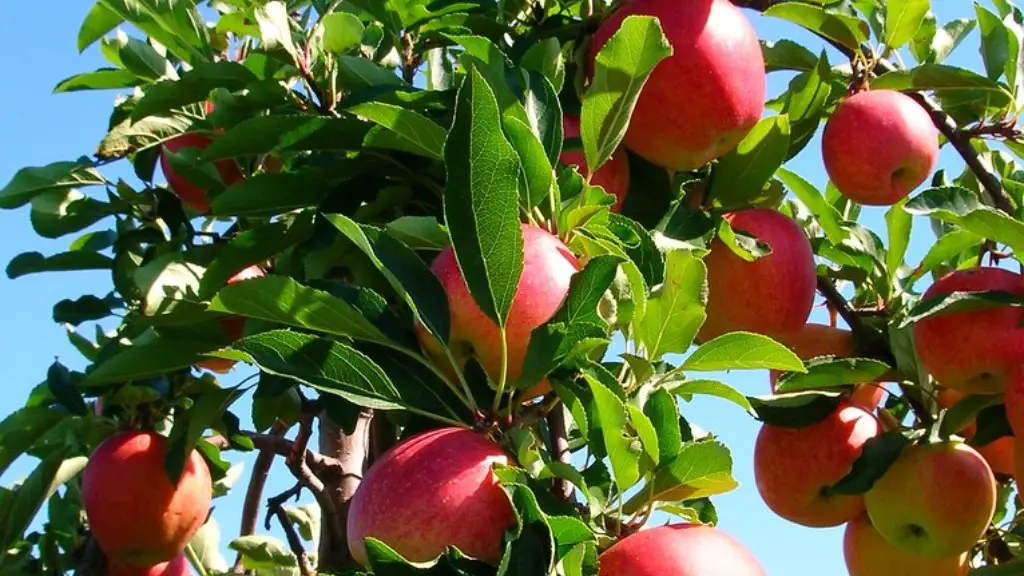What Do I Look for in an Avocado Tree?
When evaluating an avocado tree for fruiting potential, there are a few key things to look for. First, make sure the tree is healthy and has a reasonable amount of foliage. A healthy avocado tree should have vibrant, dark green leaves and a uniform canopy of foliage. To assess the health of the tree, look for yellowing leaves, dried or withered branches, and unexplainable bald patches on the tree.
Second, it’s important to check the tree’s age. Avocado trees take several years before they are capable of bearing fruit, and the older the tree is, the higher the chances that it will bear fruit. If the tree is too young (less than 3 years old), it may be too immature to bear any fruit.
Thirdly, it’s important to know what variety of avocado tree you are dealing with. Different varieties of avocados can have different maturation times and fruiting potentials. For example, some trees may take up to 6 years before they fruit, while other varieties may only take 2-3 years.
Finally, check the overall shape of the avocados. Healthy, mature avocado trees will have shaped, uniform fruits that are dark green in color. If the avocados are not shaped correctly, or if the color is too light, this may indicate a problem with the tree’s health or age.
What Factors are Involved in an Avocado Tree Fruiting?
In order for an avocado tree to bear fruit, many conditions must be met. Firstly, the tree must be mature enough, usually 3-6 years old, depending on the variety. Secondly, the soil that the tree is planted in must be well draining, loose, and have adequate nutrients for the tree. Thirdly, the tree must be receiving adequate water, sunlight, and other environmental conditions.
Fourthly, the tree must be pollinated in order for it to bear fruit. Pollination can be achieved either by nearby avocado trees whose pollen is carried by bees and other pollinating insects, or through hand pollination. Finally, the tree must be disease free in order for it to be fruitful.
How Can You Ensure Your Avocado Tree will Bear Fruit?
The best way to ensure that your avocado tree will bear fruit is by adhering to the conditions outlined above. Make sure the tree is planted in fertile, loose soil with adequate drainage. Additionally, water the tree regularly and ensure that it receives full sunlight throughout the day. Plant other avocado varieties nearby, or hand-pollinate the tree if necessary.
Ensuring that the tree is kept free of disease is also important. Check the tree often for any signs of disease such as spots, yellowing leaves, and wilting branches. If caught early, most diseases can be treated with a fungicide or other chemical solution. By following these steps, a healthy, thriving avocado tree should, in time, bear fruit.
How Can You Recognize an Avocado Tree That Won’t Fruit?
If an avocado tree is too young, is not planted in good soil, does not receive enough sunlight and water, or is disease-ridden, it is likely that it will not bear fruit. To check for these factors, observe the tree’s foliage and overall health, confirm its age, and inspect its root system. These factors will provide a good indication of the tree’s fruiting potential.
Likewise, if the tree is pollinated, but the avocados it produces are misshapen or off-color, this could be an indication that the tree is not healthy or mature enough to bear fruit. To ensure a healthy, fruitful tree, it’s important to act before the conditions become too severe to recover from.
Can Avocado Trees be Grown from Seed?
It is not recommended to attempt to grow an avocado tree from seed, as it is very likely to fail. The seed is usually not viable, and even if it is, the tree will take many years to mature and produce fruit. If you are looking for a viable option, it is best to purchase mature, propagated avocado trees from a nursery.
These trees can take up to 6 years before they bear fruit, but they have a much higher success rate than attempting to grow an avocado tree from a seed. They can also be subjected to the same care and conditions as any other avocado tree.
What Problems Might an Avocado Tree Encounter?
Avocado trees are prone to certain issues that can significantly decrease their ability to bear fruit. These issues can be caused by a number of factors, such as poor soil conditions, nutrient deficiencies, lack of pollination, inadequate water or sunlight, or disease. Common diseases that can affect an avocado tree are Fusarium wilt, Phytophthora root rot, and blight.
These diseases can be difficult to treat, and often the only solution is to remove the tree and replace it with a healthier tree. Therefore, it is important to take preventative measures from the beginning, such as planting in loose, well-draining soil and ensuring the tree is free of disease.
When is the Best Time to Plant an Avocado Tree?
The best time to plant an avocado tree is either in late winter or early spring. At this time, the tree will have the chance to establish itself and thrive during the warm seasons. It is important to note, however, that avocado trees will not begin to bear fruit until they are mature, usually between three and six years after planting.
What Tools Are Needed to Prune an Avocado Tree?
Pruning an avocado tree is an important part of tree maintenance, as it helps the tree maintain its size, shape, and health. To prune an avocado tree, it is important to use the correct tools. A pruning saw, a pair of pruners, and a pole saw are all required for a proper pruning job.
It is important to remember that pruning an avocado tree must be done with care, as the branches can be fragile. Make sure to make clean, angled cuts at the branches, and to remove any dead or diseased branches. Additionally, try to keep the tree in a symmetrical shape, and don’t remove more than 25% of the tree’s foliage at once.
What are the Common Avocado Varieties?
Common avocado varieties include the Haas avocado, the Bacon avocado, the Zutano avocado, and the Lamb Hass avocado. Each of these varieties has its own unique characteristics, such as size, shape, and flavor. Additionally, different varieties can have different maturation times and fruiting potentials. It is important to understand the specifics of each variety when deciding which one to plant for your needs.

